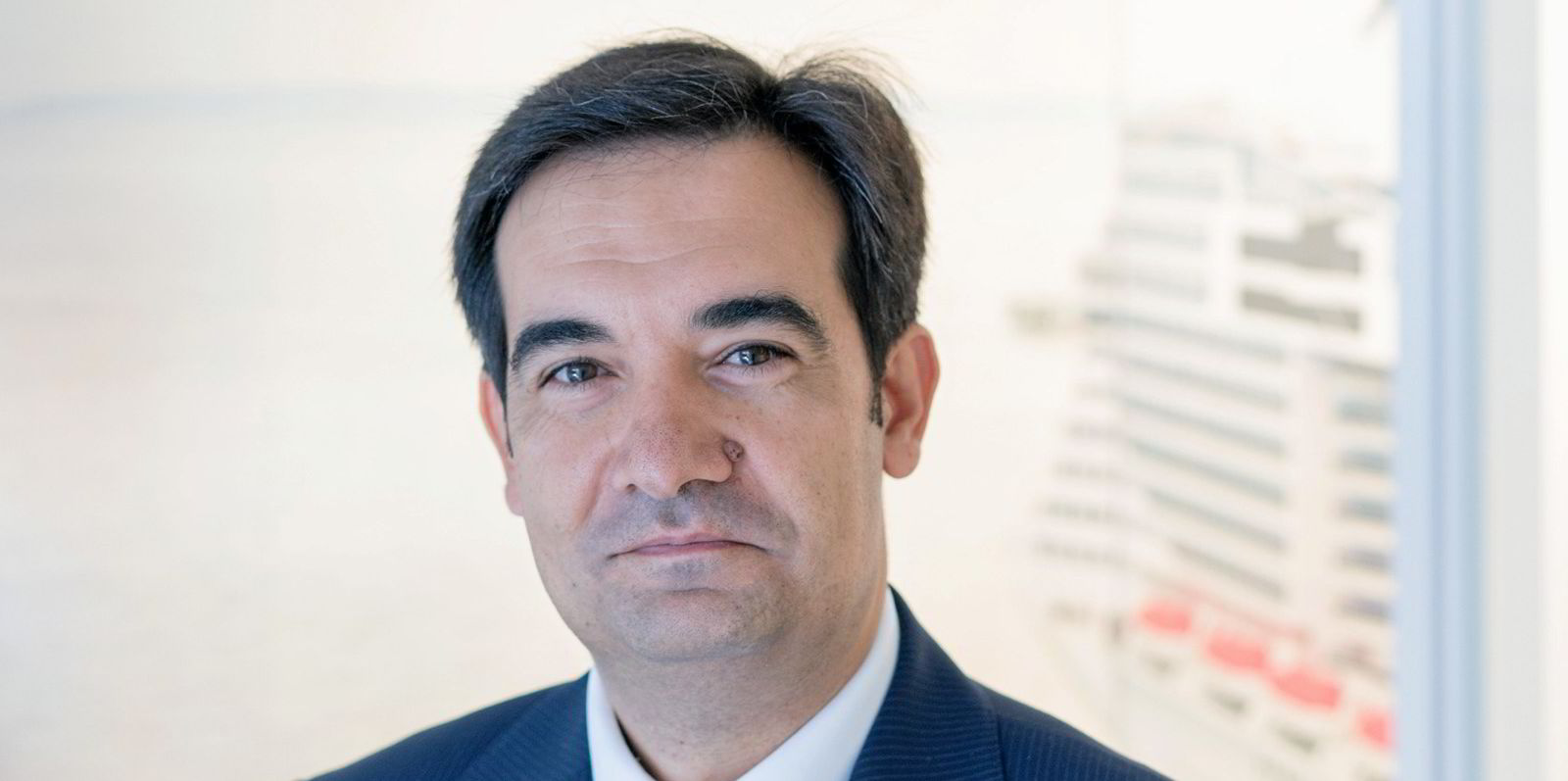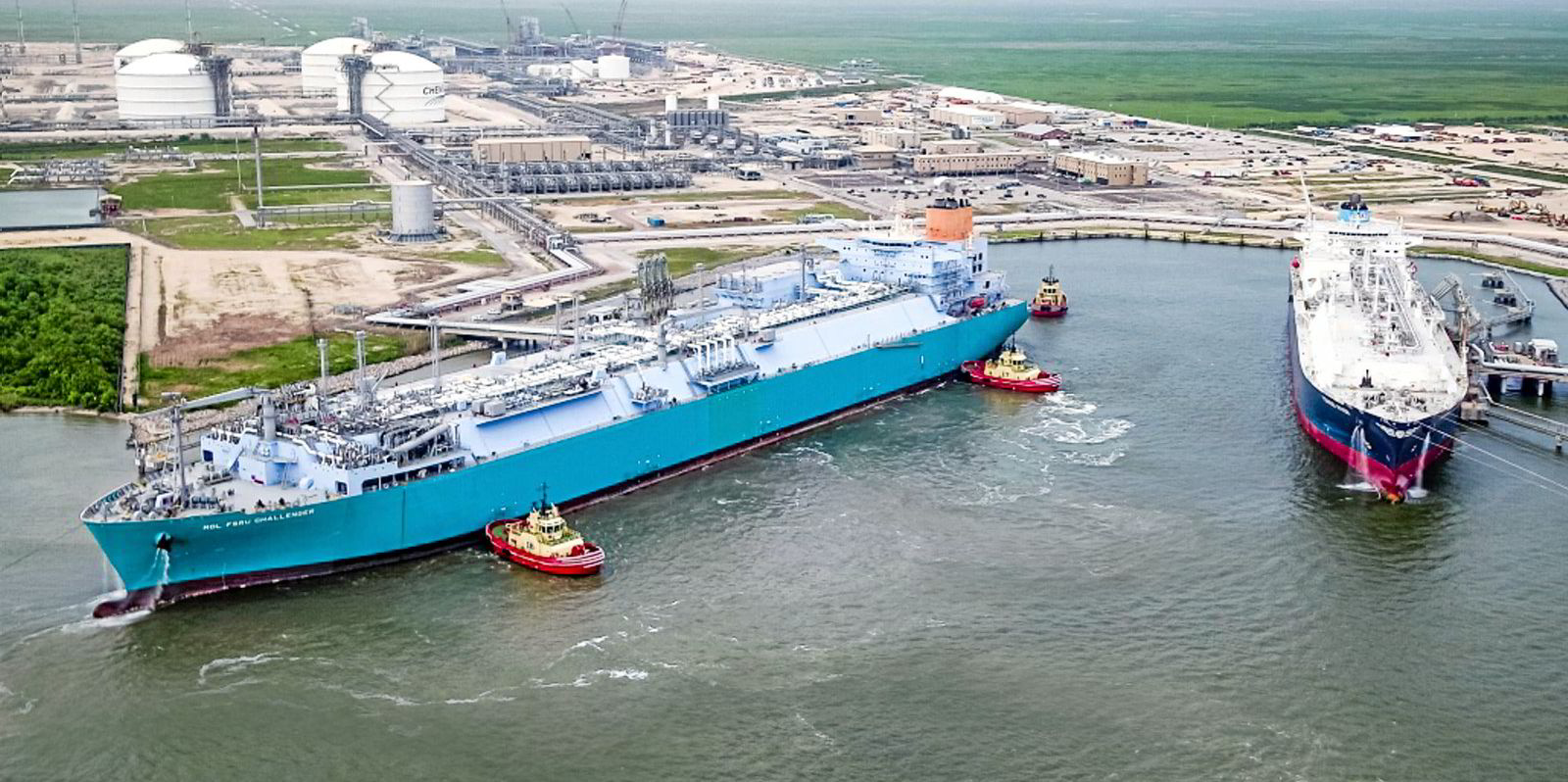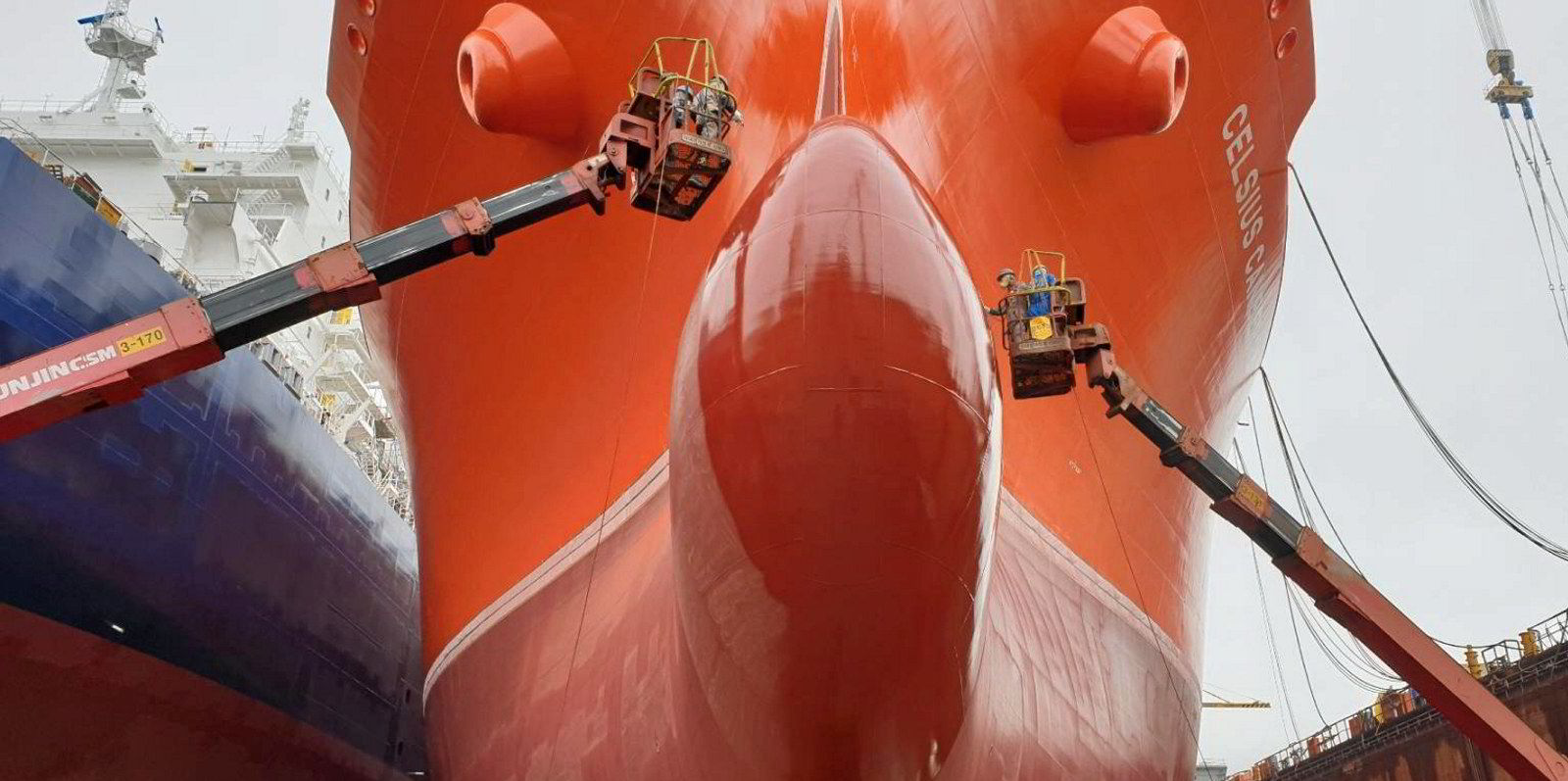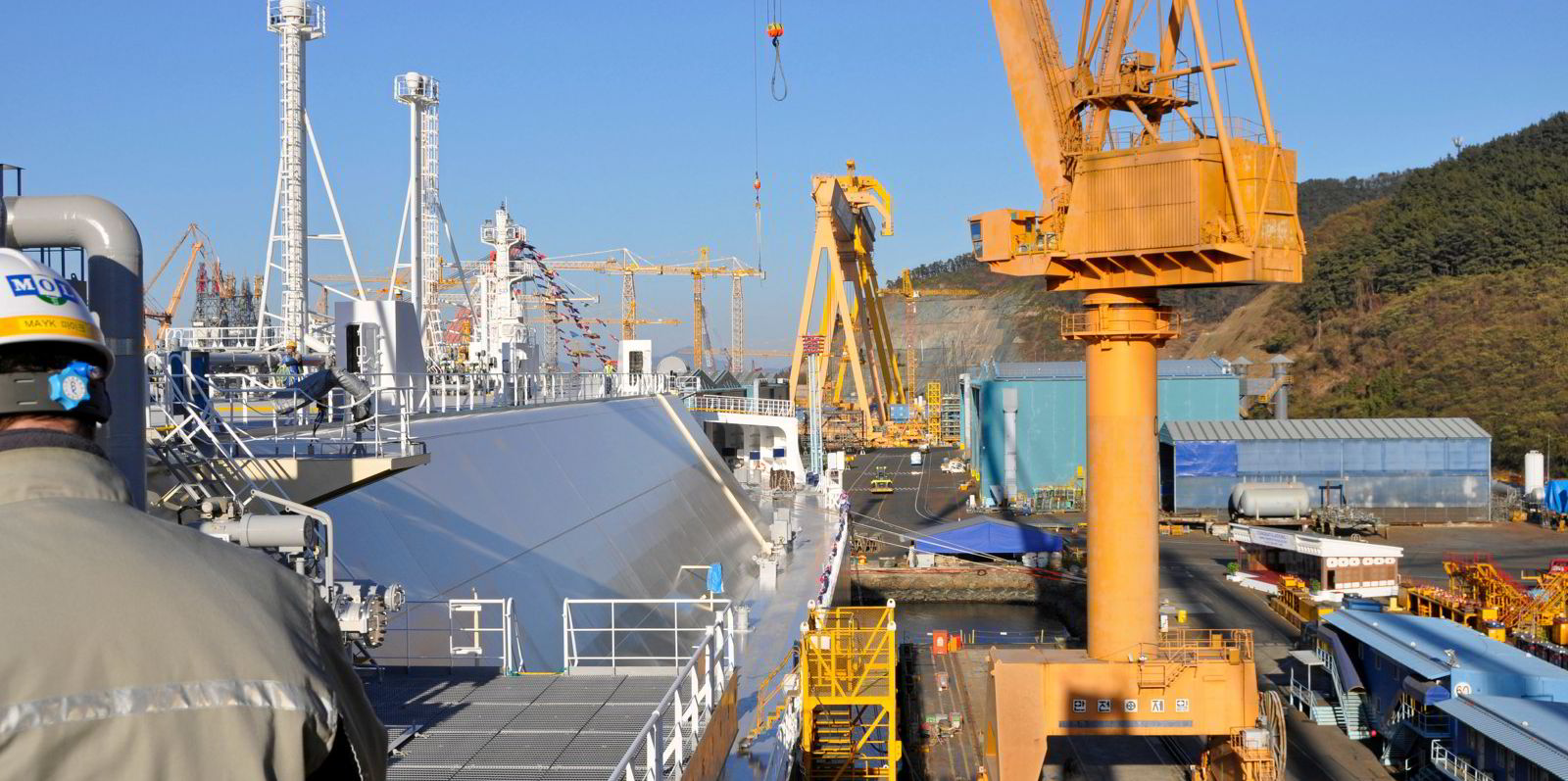Greek shipowner Dynagas has secured business for all six of its supersized LNG carrier newbuildings — the first to be built to a four-tank, 200,000-cbm capacity design.
TradeWinds understands that the contracted second tranche of four ships — which followed a two-ship order at Hyundai Heavy Industries in 2020 — are fixed to Cheniere Energy on multi-year charters.
Brokers said the earlier ships are also committed to Cheniere. They are due to be delivered from 2023 onwards.
Dynagas has been contacted about these latest charters but has not replied.
Break away
The decision to break into a new size range for LNG carriers is being keenly watched by other shipowners and charterers.
Several told TradeWinds that the 200,000-cbm size could be advantageous for long-haul trades if the operators could guarantee that they would be carrying full cargoes on the routes they were using.
Aside from Qatar’s larger Q-ship fleet the largest trading LNG carrier to date is 180,000 cbm.
A few were concerned about the potential for sloshing if tanks were not fully filled, while others appeared to want to wait to see how the trading market developed and what charterers' requirements might be.
Carlos Guerrero — who is global market leader for oil tankers and gas carriers at classification society Bureau Veritas marine and offshore — which is classing the Dynagas giants, said it is too early to say if this new size of LNG carrier will become a trend.
“I’m sure that the 200k [200,000-cbm] will be the future,” Guerrero said. “Cargo capacity enhancement is something that everyone is looking at.”
But he added that maybe the industry needs a little more time before this becomes a reality.
Dynagas’ 200,000-cbm newbuildings have been designed with four tanks, unlike their slightly larger 215,000-cbm Q-Flex and 265,000-cbm Q-Max cousins that are kitted out with five.

Guerrero told TradeWinds that this offers the owner an immediate capital expenditure saving as it reduces the number of cargo pumps and handling equipment required and simplifies the piping.
While a simple calculation of a reduction from five to four tanks would estimate this capital expenditure cut at 20%, he pointed out that the larger tanks in the 200,000-cbm vessels offer a bigger area for insulation than what is now considered a standard 174,000-cbm vessel.
Energy efficient
Guerrero said these larger ships will also be more energy efficient as they offer increased cargo volume capacity relative to installed power and a very low carbon intensity rating.
The Bureau Veritas LNG expert said the ships have been designed to be compatible with most LNG terminals and are able to transit the expanded Panama Canal.
The vessels are being built with GTT’s Mark III plus membrane type containment system, which offers the lowest cargo boil off of 0.065% per day in laden condition.
Guerrero said that for the first two vessels extensive design work was done on cargo sloshing to assess where any areas of tank reinforcement might be required.
The newbuildings will be among the first to be constructed with MAN Energy Solutions’ new low-pressure ME-GA two-stroke dual-fuel engines.







